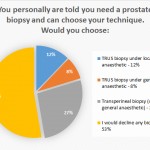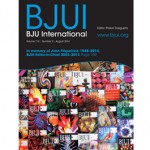Video: Nephron sparing vs radical nephroureterectomy for UTUC
Nephron-sparing management vs radical nephroureterectomy for low- or moderate-grade, low-stage upper tract urothelial carcinoma
Jay Simhan, Marc C. Smaldone, Brian L. Egleston*, Daniel Canter†, Steven N. Sterious, Anthony T. Corcoran, Serge Ginzburg, Robert G. Uzzo and Alexander Kutikov
Division of Urologic Oncology, Departments of Surgical Oncology, *Biostatistics, Fox Chase Cancer Center, Temple University School of Medicine, Philadelphia, PA and †Department of Urology, Emory University School of Medicine, Atlanta, GA, USA
OBJECTIVE
• To compare overall and cancer-specific outcomes between patients with upper tract urothelial carcinoma (UTUC) managed with either radical nephroureterectomy (RNU) or nephron-sparing measures (NSM) using a large population-based dataset.
PATIENTS AND METHODS
• Using Surveillance, Epidemiology, and End Results (SEER) data, patients diagnosed with low- or moderate-grade, localised non-invasive UTUC were stratified into two groups: those treated with RNU or NSM (observation, endoscopic ablation, or segmental ureterectomy).
• Cancer-specific mortality (CSM) and other-cause mortality (OCM) rates were determined using cumulative incidence estimators. Adjusting for clinical and pathological characteristics, the associations between surgical type, all-cause mortality and CSM were tested using Cox regressions and Fine and Gray regressions, respectively.
RESULTS
• Of 1227 patients [mean (sd) age 70.2 (11.00) years, 63.2% male] meeting inclusion criteria, 907 (73.9%) and 320 (26.1%) patients underwent RNU and NSM for low- or moderate-grade, low-stage UTUC from 1992 to 2008.
• Patients undergoing NSM were older (mean age 71.6 vs 69.7 years, P < 0.01) with a greater proportion of well-differentiated tumours (26.3% vs 18.0%, P = 0.001).
• While there were differences in OCM between the groups (P < 0.01), CSM trends were equivalent. After adjustment, RNU treatment was associated with improved non-cancer cause survival [hazard ratio (HR) 0.78, confidence interval [CI] 0.64–0.94) while no association with CSM was demonstrable (HR 0.89, CI 0.63–1.26).
CONCLUSIONS
• Patients with low- or moderate-grade, low-stage UTUC managed through NSM are older and are more likely to die of other causes, but they have similar CSM rates to those patients managed with RNU.
• These data may be useful when counselling patients with UTUC with significant competing comorbidities.



